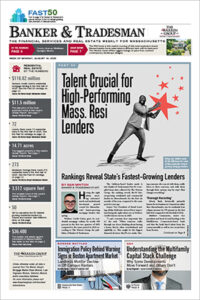It’s a startling statistic: nearly 30 percent of households nationwide are unbanked or underbanked, according to a recent FDIC study.
In 2011, 28.3 percent of households in the nation were underbanked or unbanked, up from 25.6 percent in 2009, according to the study.
The FDIC study showed the percentage of unbanked – meaning households with no deposit accounts – increased by 0.6 percent or 821,000 households, bringing the total to 8.2 percent, or 10 million households. The underbanked – those who hold a bank account, but also rely on alternative financial service providers, like pre-paid debit cards and check cashers – increased from 18.2 percent in 2009 to 20 percent in 2011. That’s 24 million households – one in five – containing 51 million adults.
New Bedford may be the most stark example.
The city is riddled with high unemployment – about double the rate of Boston – and a high population of residents who are unbanked, according to a recent UMass-Dartmouth survey. As many as 18.2 percent of low-income residents of the New Bedford area previously used a bank but stopped; 9.1 percent have never had a formal relationship with a bank or credit union. Overall, an estimated 27.3 percent are unbanked.
The result is residents are turning to alternative financial service providers, such as payday loans, which are illegal in Massachusetts due to the high annual percentage charged. Many of these lenders have migrated to the Internet to bypass state regulations. Nevertheless, the practice of payday lending, which is regulated by the Division of Banks, is not explicity prohibited. Last week, a report by the Pew Charitable Trusts outlined just how pervasive these services have become and just how much trouble consumers can get themselves in. Fifty-eight percent of payday loan borrowers have trouble meeting monthly expenses at least half the time, according to the report. And a majority of those who use the loans say payday loans take advantage of them.
This is where banks can help. Outreach campaigns aimed at the underbanked and unbanked populations – most often low-income households and newly arrived immigrants – are often the best solution.
For example, HarborOne Credit Union focuses on offering classes on financial literacy in four languages – Spanish, Portuguese, English and Haitian Creole – as well as classes in computer basics, citizenship prep and even English as a second language.
Metro Credit Union, a Chelsea-based organization, recently opened a bilingual branch. The branch gives residents a safe, convenient place to save money, get loans at reasonable rates, and receive information to help them make better financial decisions.
Cambridge Savings Bank, for its part, is sponsoring a play about money for elementary school students. The program was expanded to 17 communities across the commonwealth and the bank was recognized with the Community Reinvestment Act & Fair Lending Colloquium’s 2012 “Community Impact Award.”
More generally, April is national financial literacy month, when financial institutions focus on educating the public on financial issues.
The incentive for a bank to get involved is simple: educated consumers turn into good bank customers. But the payoff is much more powerful: creating a more informed public.






